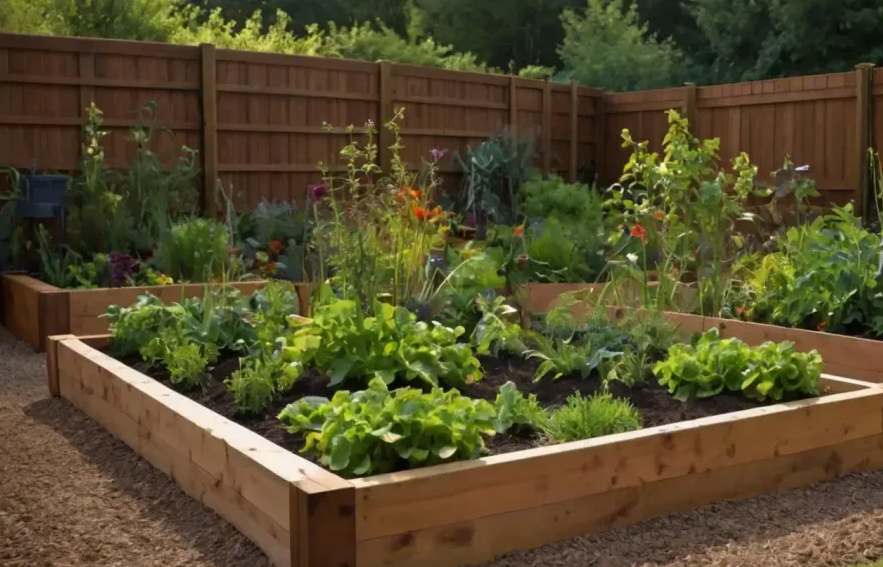
Raised bed gardening is a great way to grow fresh vegetables, herbs, and flowers while offering improved drainage, better soil quality, and easier access to planting and maintenance. However, the costs of building or buying raised beds can add up quickly. Fortunately, there are many creative and affordable solutions to set up low cost cheap raised garden beds without compromising quality or functionality.
Repurpose materials for raised garden beds
Creating raised garden beds using repurposed materials is one of the most affordable methods. Many items already on hand can serve as excellent building materials.
- Wooden pallets: Disassembled pallets are a great source of free or inexpensive wood. Before use, ensure the wood is untreated and free from harmful chemicals.
- Cinder blocks: Cinder blocks are durable and inexpensive. They can be arranged in a rectangular or square shape to form a raised bed, and the holes in the blocks can also be used as additional planting spaces.
- Old furniture: Items like wooden dressers, bookshelves, doors, or crates can be repurposed into raised beds. Remove any non-wood parts, and remember to drill drainage holes at the bottom and line the inside to prevent soil leakage.
Build with budget-friendly materials
If repurposed materials aren’t an option, some low-cost materials are widely available and easy to work with.
- Pine boards: Pine wood is a budget-friendly choice for raised beds. Although it doesn’t last as long as cedar or redwood, treating it with a natural sealant can extend its lifespan.
- Corrugated metal sheets: Corrugated metal panels are durable and create a modern look for raised beds. Pair them with wooden frames to form sturdy and inexpensive garden beds.
- Concrete blocks or bricks: Concrete blocks and bricks are affordable and readily available. They’re stackable, making them an easy material for raised beds of different heights.
Look for no-cost or low-cost designs
Some raised bed designs eliminate the need for expensive materials.
- Hugelkultur beds: This method involves layering organic materials like logs, branches, and compost directly on the ground to create a raised planting area. Over time, the organic material breaks down and enriches the soil.
- Mounded beds: Simply mound soil into a raised area, shaping it with a shovel or rake. While not as structured as traditional raised beds, this approach is highly cost-effective.
- Lasagna gardening: Layer cardboard, straw, compost, and soil to create a nutrient-rich raised bed. This method reduces waste by using natural materials that decompose over time.
Save on soil and filling materials
Filling raised beds can be one of the more expensive parts of gardening. Using affordable or free materials can help reduce costs.
- Layer organic materials: Start with a base layer of logs, sticks, or leaves at the bottom of the bed. Add compost and soil on top to create a nutrient-rich growing space.
- Use bulk soil: Buying soil from a local supplier is often cheaper than purchasing small bags. Many suppliers offer discounts for larger quantities.
- Make your compost: Kitchen scraps, grass clippings, and yard waste can be composted to create free, nutrient-dense soil for your garden.
Look for second-hand supplies
Second-hand materials are often available at low or no cost and can help stretch a gardening budget.
- Shared resources: Many community gardens have communal tools, soil, and water sources that reduce the need for personal investment in gardening supplies.
- Visit local recycling centers: Many recycling centers or thrift stores carry used items suitable for building raised beds.
- Ask neighbors or friends: Sometimes, friends or neighbors may have leftover materials from their home or garden projects that they’re willing to share.
Maintain your raised beds to save money long-term
Investing in regular maintenance helps raised beds last longer, reducing the need for replacements.
- Use natural, food-safe sealants to seal and protect wood from moisture and rot.
- Inspect raised beds regularly for signs of damage or deterioration. Repairing small issues early prevents larger, more expensive problems later.
- Rotate planting areas within the raised bed each season to keep the soil healthy and reduce pest problems.
Conclusion
Creating low-cost cheap raised garden beds is possible with a little creativity and resourcefulness. Repurposing materials, choosing budget-friendly options, and using natural designs can help gardeners enjoy the benefits of raised bed gardening without overspending. By implementing these tips, raised beds can become a cost-effective and practical addition to any garden, making fresh produce and beautiful plants accessible to everyone.





Leave a Reply